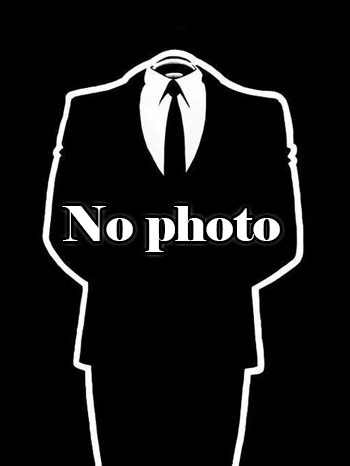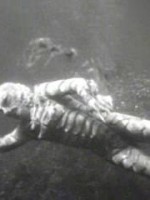Douglas Kenney is a Actor, Scriptwriter and Producer American born on 10 december 1947 at Palm Springs (USA)
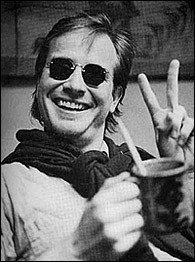
Douglas C. Kenney (December 10, 1946–August 27, 1980) was an American writer and actor who co-founded National Lampoon magazine in 1970. Kenney edited the magazine and wrote much of its early material.
Douglas C. Kenney was born in West Palm Beach, Florida, and attended Gilmour Academy, near Cleveland, Ohio, for high school. The death of his older brother, Daniel, at 29, had a profound effect on him.
National Lampoon
While at Harvard University, Kenney was a member of the Signet society and editor of the Harvard Lampoon. There he was part of the first group of newcomers who restyled the college humor magazine. Another of these writers was Henry Beard, with whom Kenney frequently collaborated, and who became a lifelong friend. Together with Beard, he wrote Bored of the Rings, which was published during 1969. Kenney graduated in 1968. Soon after, he, Beard and fellow Harvard alumnus Robert Hoffman began work on founding the humor magazine National Lampoon.
Kenney was one of the originating forces of what was to become known during the 1970s as the "new wave" of comedy, a dark, irreverent style of humor Kenney used as the basis for his magazine. Kenney was Editor-in-Chief from 1970 to 1972, Senior Editor 1973 to 1974, and editor from 1975 to 1976.
Kenney wrote much of the early material, such as "Mrs. Agnew's Diary", a regular column written as the diary of Spiro Agnew (or "Spiggy")'s wife, chronicling her life among Richard Nixon and other famous politicians. The feature was an Americanized version of Private Eye's long-running column "Mrs. Wilson's Diary," written from the viewpoint of Prime Minister Harold Wilson's wife.
To escape the pressures of running a successful magazine Kenney sometimes took unannounced breaks although, despite these absences, "Mrs Agnew's Diary" was always submitted to the Lampoon. During one of these breaks he wrote a comic novel, "Teenage Commies from Outer Space". Kenney threw the manuscript in a bin after a negative review from Beard. Beard later said that it was simply the wrong form and the spirit of the novel was channelled into the National Lampoon's 1964 High School Yearbook, which Kenney co-wrote with P. J. O'Rourke.
Kenney had a five-year buyout contract with the Lampoon's publisher, 21st Century Communications. Kenney, Beard, and Hoffman took advantage of this, dividing a sum of $7,000,000 among them. Kenney remained on staff until 1977. He quit to co-author the screenplay to National Lampoon's Animal House, along with Chris Miller and Harold Ramis.
Kenney had a small role in Animal House as the fraternity brother called "Stork," whose only line of dialogue was the combative "Well, whut the hail we s'posed to do, yuh mo-ron?" Kenney selected this role for himself. Produced quickly on a small budget, National Lampoon's Animal House was, until Ghostbusters, the most profitable Hollywood comedy.
Caddyshack
Kenney produced and wrote Caddyshack with Brian Doyle-Murray and Harold Ramis. Kenney also had a small role in Caddyshack as a dinner guest of Al Czervik. In the background of the Bushwood Club dinner party scene, Kenney is visible chopping out a line of cocaine for the female guest next to him.
When Caddyshack opened to negative reviews in July 1980, Kenney became deeply depressed, though Ramis joked that the film was "a six-million-dollar scholarship to film school." At a press conference, Kenney verbally abused reporters and then fell into a drunken stupor. Concerned friends began asking Kenney to seek professional help, but by that time he was out of control, joking about previous suicide attempts, driving recklessly, and using increasing amounts of cocaine.
Awards
Kenny received a nomination from The Writers Guild of America for his "National Lampoon's Animal House" screenplay (along with Harold Ramis and Chris Miller (writer).
Death
After the incident at the Caddyshack press conference, it became apparent that all was not well. Kenney's close friend Chevy Chase tried taking him to Kauai, Hawaii, hoping the relaxing environment would help him, but had to leave to get back to work. After Chase left, Kenney's girlfriend, Kathryn Walker, came to keep him company, but she also had to leave to get back to work. Kenney had called Chase and invited him to come back out, and Chase was getting ready to leave when he got a telephone call that his friend was missing.
Kenney died on August 27, 1980, aged 33, after falling from a thirty-foot cliff called the Hanapepe Lookout. Police found his abandoned vehicle the following day, but it was not until three days later that Kenney's body was discovered. His death was classified as "accidental" by Kauai police. About Kenney's death, Harold Ramis famously quipped "Doug probably fell while he was looking for a place to jump".
Found in Kenney's hotel room were notes for projects he had been planning, jokes, and an outline for a new movie. "We also found," Chevy Chase told Rolling Stone magazine, "written on the back of a hotel receipt, a bunch of random thoughts that included the reasons why he loved Kathryn, and a gag line: 'These last few days are among the happiest I've ever ignored.'"
National Lampoon's tribute to him was an editorial by Matty Simmons and a cartoon showing a sign next to the edge of a cliff with the inscription, "Doug Kenney Slipped Here."
Ramis paid homage by naming the main character in his 1996 film Multiplicity Doug Kinney, a variation on and tribute to Kenney.
About 26 years after his death, the book "A Futile and Stupid Gesture: How Doug Kenney and National Lampoon Changed Comedy Forever" was published. It was a biography on Kenney and the impact he made on comedy and the people he knew.
Source : Wikidata
Douglas Kenney

- Infos
- Photos
- Best films
- Family
- Characters
- Awards
Birth name Douglas C. Kenney
Nationality USA
Birth 10 december 1947 at Palm Springs (USA)
Death 27 august 1980 (at 32 years)
Nationality USA
Birth 10 december 1947 at Palm Springs (USA)
Death 27 august 1980 (at 32 years)
Douglas C. Kenney (December 10, 1946–August 27, 1980) was an American writer and actor who co-founded National Lampoon magazine in 1970. Kenney edited the magazine and wrote much of its early material.
Biography
ChildhoodDouglas C. Kenney was born in West Palm Beach, Florida, and attended Gilmour Academy, near Cleveland, Ohio, for high school. The death of his older brother, Daniel, at 29, had a profound effect on him.
National Lampoon
While at Harvard University, Kenney was a member of the Signet society and editor of the Harvard Lampoon. There he was part of the first group of newcomers who restyled the college humor magazine. Another of these writers was Henry Beard, with whom Kenney frequently collaborated, and who became a lifelong friend. Together with Beard, he wrote Bored of the Rings, which was published during 1969. Kenney graduated in 1968. Soon after, he, Beard and fellow Harvard alumnus Robert Hoffman began work on founding the humor magazine National Lampoon.
Kenney was one of the originating forces of what was to become known during the 1970s as the "new wave" of comedy, a dark, irreverent style of humor Kenney used as the basis for his magazine. Kenney was Editor-in-Chief from 1970 to 1972, Senior Editor 1973 to 1974, and editor from 1975 to 1976.
Kenney wrote much of the early material, such as "Mrs. Agnew's Diary", a regular column written as the diary of Spiro Agnew (or "Spiggy")'s wife, chronicling her life among Richard Nixon and other famous politicians. The feature was an Americanized version of Private Eye's long-running column "Mrs. Wilson's Diary," written from the viewpoint of Prime Minister Harold Wilson's wife.
To escape the pressures of running a successful magazine Kenney sometimes took unannounced breaks although, despite these absences, "Mrs Agnew's Diary" was always submitted to the Lampoon. During one of these breaks he wrote a comic novel, "Teenage Commies from Outer Space". Kenney threw the manuscript in a bin after a negative review from Beard. Beard later said that it was simply the wrong form and the spirit of the novel was channelled into the National Lampoon's 1964 High School Yearbook, which Kenney co-wrote with P. J. O'Rourke.
Kenney had a five-year buyout contract with the Lampoon's publisher, 21st Century Communications. Kenney, Beard, and Hoffman took advantage of this, dividing a sum of $7,000,000 among them. Kenney remained on staff until 1977. He quit to co-author the screenplay to National Lampoon's Animal House, along with Chris Miller and Harold Ramis.
Kenney had a small role in Animal House as the fraternity brother called "Stork," whose only line of dialogue was the combative "Well, whut the hail we s'posed to do, yuh mo-ron?" Kenney selected this role for himself. Produced quickly on a small budget, National Lampoon's Animal House was, until Ghostbusters, the most profitable Hollywood comedy.
Caddyshack
Kenney produced and wrote Caddyshack with Brian Doyle-Murray and Harold Ramis. Kenney also had a small role in Caddyshack as a dinner guest of Al Czervik. In the background of the Bushwood Club dinner party scene, Kenney is visible chopping out a line of cocaine for the female guest next to him.
When Caddyshack opened to negative reviews in July 1980, Kenney became deeply depressed, though Ramis joked that the film was "a six-million-dollar scholarship to film school." At a press conference, Kenney verbally abused reporters and then fell into a drunken stupor. Concerned friends began asking Kenney to seek professional help, but by that time he was out of control, joking about previous suicide attempts, driving recklessly, and using increasing amounts of cocaine.
Awards
Kenny received a nomination from The Writers Guild of America for his "National Lampoon's Animal House" screenplay (along with Harold Ramis and Chris Miller (writer).
Death
After the incident at the Caddyshack press conference, it became apparent that all was not well. Kenney's close friend Chevy Chase tried taking him to Kauai, Hawaii, hoping the relaxing environment would help him, but had to leave to get back to work. After Chase left, Kenney's girlfriend, Kathryn Walker, came to keep him company, but she also had to leave to get back to work. Kenney had called Chase and invited him to come back out, and Chase was getting ready to leave when he got a telephone call that his friend was missing.
Kenney died on August 27, 1980, aged 33, after falling from a thirty-foot cliff called the Hanapepe Lookout. Police found his abandoned vehicle the following day, but it was not until three days later that Kenney's body was discovered. His death was classified as "accidental" by Kauai police. About Kenney's death, Harold Ramis famously quipped "Doug probably fell while he was looking for a place to jump".
Found in Kenney's hotel room were notes for projects he had been planning, jokes, and an outline for a new movie. "We also found," Chevy Chase told Rolling Stone magazine, "written on the back of a hotel receipt, a bunch of random thoughts that included the reasons why he loved Kathryn, and a gag line: 'These last few days are among the happiest I've ever ignored.'"
National Lampoon's tribute to him was an editorial by Matty Simmons and a cartoon showing a sign next to the edge of a cliff with the inscription, "Doug Kenney Slipped Here."
Ramis paid homage by naming the main character in his 1996 film Multiplicity Doug Kinney, a variation on and tribute to Kenney.
About 26 years after his death, the book "A Futile and Stupid Gesture: How Doug Kenney and National Lampoon Changed Comedy Forever" was published. It was a biography on Kenney and the impact he made on comedy and the people he knew.
Best films
Usually with
Filmography of Douglas Kenney (6 films)
Actor
 , 1h33
, 1h33Origin USA
Genres Comedy, Documentary, Historical
Actors John Belushi, John Candy, Chevy Chase, Bill Murray, Gilda Radner, John Goodman
Roles Self (archive footage)
Rating71%





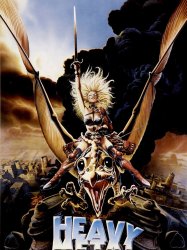
Heavy Metal (1981)
, 1h30Directed by Jimmy T. Murakami, Gerald Potterton, John Bruno, Pino Van Lamsweerde
Origin Canada
Genres Science fiction, Musical theatre, Fantasy, Action, Adventure, Musical, Animation
Themes Medical-themed films, Films about drugs, Films about sexuality, Erotic films, Films about extraterrestrial life, Films about extraterrestrial life
Actors Harvey Atkin, Rodger Bumpass, Jackie Burroughs, John Candy, Joe Flaherty, Eugene Levy
Roles Regolien le Robot
Rating65%





The movie's title sequence story (based on the original story by Dan O'Bannon and art by Thomas Warkentin) opens with a space shuttle flying in orbit over Earth. The bay doors (on the belly of the shuttle) open, releasing a 1960 Corvette. An astronaut seated in the Corvette then begins descending through Earth's atmosphere, landing in a desert canyon.

Caddyshack (1980)
, 1h38Directed by Harold Ramis, Ricou Browning
Origin USA
Genres Comedy
Themes Sports films, Golf films
Actors Chevy Chase, Rodney Dangerfield, Ted Knight, Michael O'Keefe, Bill Murray, Cindy Morgan
Roles Al Czervik's Dinner Guest (uncredited)
Rating71%





Danny Noonan (Michael O'Keefe) works as a caddy at the upscale Bushwood Country Club to raise enough money to go to college. Danny often caddies for Ty Webb (Chevy Chase), a suave and talented golfer and the son of one of Bushwood's co-founders. Danny decides to gain favor with Judge Elihu Smails (Ted Knight), the country club's stodgy co-founder and director of the Caddy Scholarship program, by caddying for him. Meanwhile, Carl Spackler (Bill Murray), one of the greenskeepers, is entrusted with combatting a potentially disastrous gopher infestation. Throughout the film, Carl tries a variety of methods to kill the gopher (e.g. shooting, drowning) without success.

Animal House (1978)
, 1h49Directed by Ivan Reitman, John Landis
Origin USA
Genres Comedy
Themes L'adolescence, Films about children, Films about sexuality, Erotic films, Teen movie
Actors John Belushi, Tim Matheson, John Vernon, Verna Bloom, Tom Hulce, Peter Riegert
Roles Stork
Rating73%





In 1962, college freshmen Lawrence "Larry" Kroger and Kent Dorfman seek to join a fraternity at Faber College. Finding themselves out of place at the prestigious Omega Theta Pi House's party, and rejected by other houses, they finally visit the slovenly and riotous Delta Tau Chi House, where Kent's brother was once a member, making Kent a "legacy", unable to be declined. Larry and Kent are invited to pledge and given the fraternity names "Pinto" and "Flounder," respectively, by John "Bluto" Blutarsky.

Between the Lines (1977)
, 1h41Directed by Joan Micklin Silver
Origin USA
Genres Drama, Comedy
Themes Films about writers, Films about journalists
Actors John Heard, Lindsay Crouse, Jeff Goldblum, Bruno Kirby, Jill Eikenberry, Marilu Henner
Roles Doug Henkel
Rating65%





The story revolves around a group of people who work at The Back Bay Mainline, an alternative newspaper in Boston.
Scriptwriter
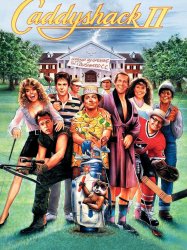
Caddyshack II (1988)
, 1h37Directed by Allan Arkush
Origin USA
Genres Comedy
Themes Sports films, Golf films
Actors Jackie Mason, Robert Stack, Randy Quaid, Dan Aykroyd, Chevy Chase, Jessica Lundy
Roles Characters
Rating38%





Kate Hartounian (Jessica Lundy) is the daughter of a wealthy and widowed real estate developer of Armenian and Jewish descent. Eager to improve her lot in life, she makes friends with Miffy Young (Chynna Phillips), a snooty WASP girl, who encourages her and her father to join their country club.

Caddyshack (1980)
, 1h38Directed by Harold Ramis, Ricou Browning
Origin USA
Genres Comedy
Themes Sports films, Golf films
Actors Chevy Chase, Rodney Dangerfield, Ted Knight, Michael O'Keefe, Bill Murray, Cindy Morgan
Roles Writer
Rating71%





Danny Noonan (Michael O'Keefe) works as a caddy at the upscale Bushwood Country Club to raise enough money to go to college. Danny often caddies for Ty Webb (Chevy Chase), a suave and talented golfer and the son of one of Bushwood's co-founders. Danny decides to gain favor with Judge Elihu Smails (Ted Knight), the country club's stodgy co-founder and director of the Caddy Scholarship program, by caddying for him. Meanwhile, Carl Spackler (Bill Murray), one of the greenskeepers, is entrusted with combatting a potentially disastrous gopher infestation. Throughout the film, Carl tries a variety of methods to kill the gopher (e.g. shooting, drowning) without success.

Animal House (1978)
, 1h49Directed by Ivan Reitman, John Landis
Origin USA
Genres Comedy
Themes L'adolescence, Films about children, Films about sexuality, Erotic films, Teen movie
Actors John Belushi, Tim Matheson, John Vernon, Verna Bloom, Tom Hulce, Peter Riegert
Roles Writer
Rating73%





In 1962, college freshmen Lawrence "Larry" Kroger and Kent Dorfman seek to join a fraternity at Faber College. Finding themselves out of place at the prestigious Omega Theta Pi House's party, and rejected by other houses, they finally visit the slovenly and riotous Delta Tau Chi House, where Kent's brother was once a member, making Kent a "legacy", unable to be declined. Larry and Kent are invited to pledge and given the fraternity names "Pinto" and "Flounder," respectively, by John "Bluto" Blutarsky.
Producer

Caddyshack (1980)
, 1h38Directed by Harold Ramis, Ricou Browning
Origin USA
Genres Comedy
Themes Sports films, Golf films
Actors Chevy Chase, Rodney Dangerfield, Ted Knight, Michael O'Keefe, Bill Murray, Cindy Morgan
Roles Producer
Rating71%





Danny Noonan (Michael O'Keefe) works as a caddy at the upscale Bushwood Country Club to raise enough money to go to college. Danny often caddies for Ty Webb (Chevy Chase), a suave and talented golfer and the son of one of Bushwood's co-founders. Danny decides to gain favor with Judge Elihu Smails (Ted Knight), the country club's stodgy co-founder and director of the Caddy Scholarship program, by caddying for him. Meanwhile, Carl Spackler (Bill Murray), one of the greenskeepers, is entrusted with combatting a potentially disastrous gopher infestation. Throughout the film, Carl tries a variety of methods to kill the gopher (e.g. shooting, drowning) without success.
 Connection
Connection

